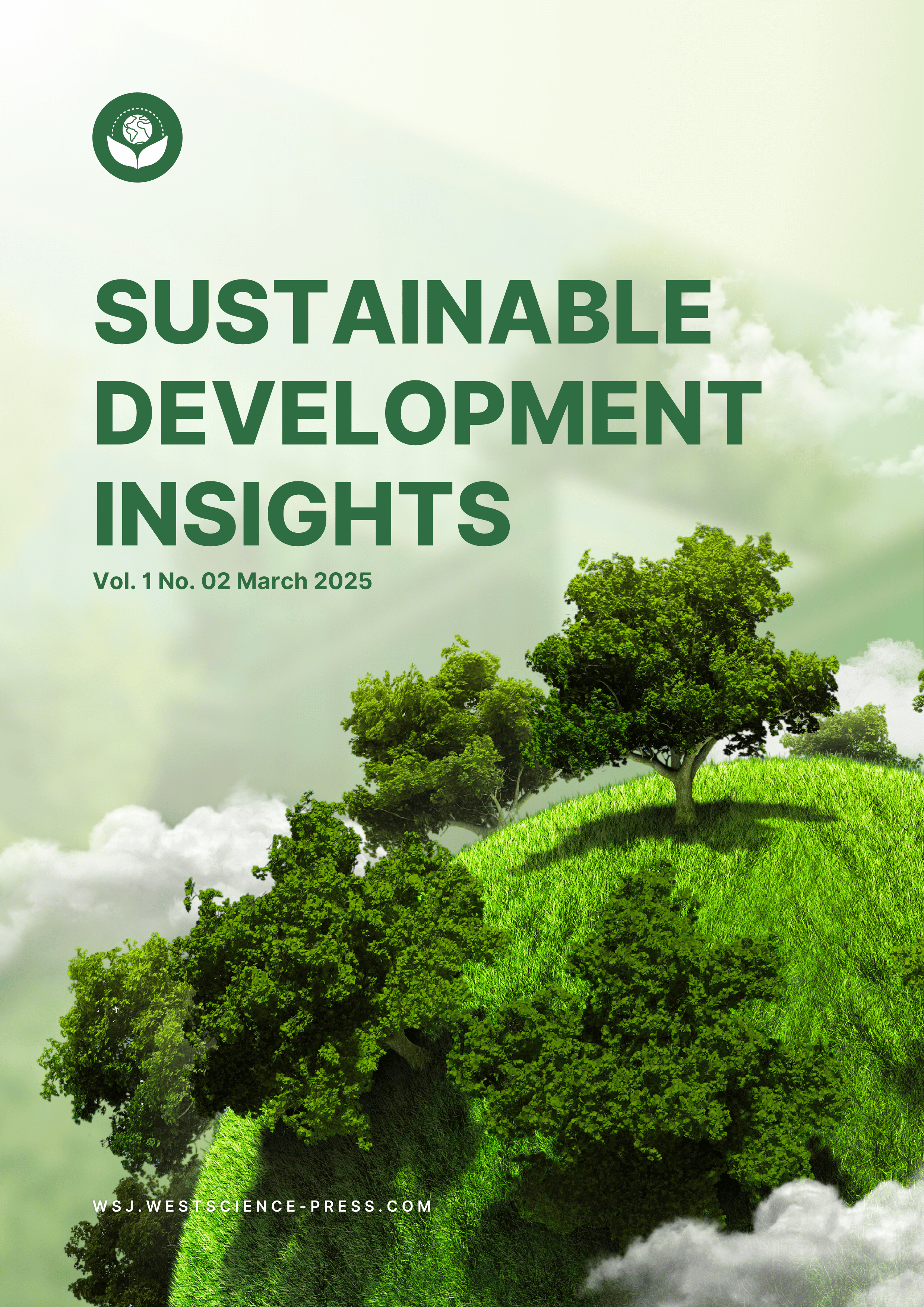Fiscal Policy for Sustainable Finance: The Effectiveness of Green Subsidies and Tax Incentives in Spurring Sustainable Investment in the Clean Energy Sector
DOI:
https://doi.org/10.58812/sdi.v2i01.1802Keywords:
Fiscal Policy, Green Subsidies, Tax Incentives, Sustainable Investment, Clean Energy SectorAbstract
This study examines the effectiveness of fiscal policies, specifically green subsidies and tax incentives, in promoting sustainable investments in Indonesia's clean energy sector. Utilizing a quantitative approach, data were collected from 70 respondents comprising policymakers, renewable energy developers, and investors. The study employed a structured questionnaire using a 1–5 Likert scale, and the data were analyzed using SPSS version 26. The findings indicate that both green subsidies and tax incentives have significant positive effects on sustainable investment, with tax incentives showing a stronger impact. These fiscal tools collectively explain 65% of the variance in sustainable investment levels. The study underscores the importance of integrating fiscal policies to overcome barriers and foster a robust investment ecosystem. Recommendations include streamlining subsidy disbursement processes, enhancing tax policy clarity, and developing a coordinated fiscal strategy to accelerate Indonesia’s clean energy transition.
References
[1] V. Agbakwuru, P. O. Obidi, O. S. Salihu, and O. C. MaryJane, “The role of renewable energy in achieving sustainable development goals,” 2024.
[2] M. B. Sistriatmaja, B. R. Samudro, Y. P. Pratama, and A. Prasetyo, “Energy transition as a way to improve the welfare of Indonesian society,” Multidiscip. Rev., vol. 7, no. 12, p. 2024283, 2024.
[3] B. Basri, L. Aisah, and A. Abdullah, “Realizing Sustainable Development In Indonesia Through Economic Growth Priorities: Empirical Evidence Vector Error Correction Model (VECM),” Ekon. SYARIAH J. Econ. Stud., vol. 8, no. 1, pp. 79–94, 2024.
[4] P. L. Effendi, B. Wirjodirdjo, and S. I. Rosdaniah, “Priority Business Factors for Green Attributes of Power Supply in Indonesia,” in 2024 IEEE International Symposium on Consumer Technology (ISCT), IEEE, 2024, pp. 682–687.
[5] P. Luo, C. Zhang, and B. Cheng, “Toward Sustainable Development: The Impact of Green Fiscal Policy on Green Total Factor Productivity,” Sustainability, vol. 17, no. 3, p. 1050, 2025.
[6] J. Tong, Y. Yang, C. Zheng, and M. Zheng, “Do Fiscal Incentives Contribute to Pollution Control? Empirical Evidence from China,” Sustainability, vol. 16, no. 22, p. 9632, 2024.
[7] A. Moroz and S. Lyeonov, “Stimulating Financial-Fiscal Instruments of Supporting Development of Renewable Energy Sources: Bibliometric Analysis,” Financ. Mark. Institutions Risks, vol. 8, no. 4, pp. 179–203, 2024.
[8] S. Erdogan and U. K. Pata, “Uncovering time-, frequency-and quantile-based impacts of energy, fiscal policy instruments, and economic growth on sustainable development,” Int. J. Sustain. Dev. World Ecol., vol. 32, no. 1, pp. 65–79, 2025.
[9] V. Melnyk and V. Hrebenozhko, “Fiscal Mechanism for Countering Negative Environmental Externalities,” J. Vasyl Stefanyk Precarpathian Natl. Univ., vol. 11, no. 4, pp. 111–121, 2024.
[10] Z. Gao, “Impact of green fiscal policy on sustainable development performance of Chinese enterprises,” RE&PQJ, vol. 21, no. 3, 2023.
[11] C. Zhou and X. Zhang, “Measuring the efficiency of fiscal policies for environmental pollution control and the spatial effect of fiscal decentralization in China,” Int. J. Environ. Res. Public Health, vol. 17, no. 23, p. 8974, 2020.
[12] A. IDRIS, “COMPARATIVE ANALYSIS OF FISCAL FRAMEWORKS AND REVENUE MOBILISATION: LESSONS FROM NIGERIA, EGYPT, AND AUSTRALIA”.
[13] Y. Xiong and X. Yang, “Government subsidies for the Chinese photovoltaic industry,” Energy Policy, vol. 99, pp. 111–119, 2016.
[14] T.-A.-T. Nguyen, S.-Y. Chou, T.-H.-D. Pham, and T. H.-K. Yu, “Financial subsidy optimization to promote renewable energy development for sustainable development goal,” Energy Environ., p. 0958305X241291726, 2024.
[15] Y. Shi and J. Ge, “The role of government fiscal and tax incentives in green technology innovation and enterprise development: implications for human health and hygiene,” Front. Public Heal., vol. 12, p. 1502856, 2025.
[16] D. De Giovanni and E. Iakimova, “Renewable energy investments, support schemes and the dirty option,” Appl. Stoch. Model. Bus. Ind., vol. 40, no. 6, pp. 1472–1483, 2024.
[17] O. W. Johnson et al., “Intersectionality and energy transitions: A review of gender, social equity and low-carbon energy,” Energy Res. Soc. Sci., vol. 70, p. 101774, 2020.
[18] K. Harrison, “A tale of two taxes: The fate of environmental tax reform in Canada,” Rev. Policy Res., vol. 29, no. 3, pp. 383–407, 2012.
[19] Y. Sonjaya and M. Y. Noch, “Analysis of the Effectiveness of Tax Incentives on Energy Sector Investments,” Adv. Tax. Res., vol. 2, no. 2, pp. 120–131, 2024.
[20] N. Ashraf, B. Comyns, G. A. Arain, and Z. A. Bhatti, “The roles of network embeddedness, market incentives, and slack resources in the adoption of clean technologies by firms in developing countries,” Clim. Policy, vol. 19, no. 5, pp. 556–570, 2019.
[21] P. Alizadeh, “Public Policies to Unlock Private Investment in Green Energy Projects (The Case of Iran as a Resource-Rich Country),” in 2024 9th International Conference on Technology and Energy Management (ICTEM), IEEE, 2024, pp. 1–5.
[22] C. Afandy, “Green Finance Revolution: Investigating the Role of Sustainable Investments in Driving Corporate Profitability in Indonesia,” Int. J. Business, Law, Educ., vol. 5, no. 2, pp. 2765–2777, 2024.
[23] L. Judijanto, H. Jayadi, N. Suryaningsih, and H. Imran, “Evaluation of the Effect of Green Energy Policy on Renewable Power Plant Investment in Indonesia,” West Sci. Nat. Technol., vol. 2, pp. 192–198, Dec. 2024, doi: 10.58812/wsnt.v2i04.1535.
[24] L. Judijanto, I. Adinugroho, U. Tahir, M. A. Ilah, and E. Sudarmanto, “The Impact of Green Investment , Public Education , and the Use of Renewable Resources on Economic Prosperity in Indonesia,” vol. 2, no. 04, pp. 1170–1180, 2024.
[1] V. Agbakwuru, P. O. Obidi, O. S. Salihu, and O. C. MaryJane, “The role of renewable energy in achieving sustainable development goals,” 2024.
[2] M. B. Sistriatmaja, B. R. Samudro, Y. P. Pratama, and A. Prasetyo, “Energy transition as a way to improve the welfare of Indonesian society,” Multidiscip. Rev., vol. 7, no. 12, p. 2024283, 2024.
[3] B. Basri, L. Aisah, and A. Abdullah, “Realizing Sustainable Development In Indonesia Through Economic Growth Priorities: Empirical Evidence Vector Error Correction Model (VECM),” Ekon. SYARIAH J. Econ. Stud., vol. 8, no. 1, pp. 79–94, 2024.
[4] P. L. Effendi, B. Wirjodirdjo, and S. I. Rosdaniah, “Priority Business Factors for Green Attributes of Power Supply in Indonesia,” in 2024 IEEE International Symposium on Consumer Technology (ISCT), IEEE, 2024, pp. 682–687.
[5] P. Luo, C. Zhang, and B. Cheng, “Toward Sustainable Development: The Impact of Green Fiscal Policy on Green Total Factor Productivity,” Sustainability, vol. 17, no. 3, p. 1050, 2025.
[6] J. Tong, Y. Yang, C. Zheng, and M. Zheng, “Do Fiscal Incentives Contribute to Pollution Control? Empirical Evidence from China,” Sustainability, vol. 16, no. 22, p. 9632, 2024.
[7] A. Moroz and S. Lyeonov, “Stimulating Financial-Fiscal Instruments of Supporting Development of Renewable Energy Sources: Bibliometric Analysis,” Financ. Mark. Institutions Risks, vol. 8, no. 4, pp. 179–203, 2024.
[8] S. Erdogan and U. K. Pata, “Uncovering time-, frequency-and quantile-based impacts of energy, fiscal policy instruments, and economic growth on sustainable development,” Int. J. Sustain. Dev. World Ecol., vol. 32, no. 1, pp. 65–79, 2025.
[9] V. Melnyk and V. Hrebenozhko, “Fiscal Mechanism for Countering Negative Environmental Externalities,” J. Vasyl Stefanyk Precarpathian Natl. Univ., vol. 11, no. 4, pp. 111–121, 2024.
[10] Z. Gao, “Impact of green fiscal policy on sustainable development performance of Chinese enterprises,” RE&PQJ, vol. 21, no. 3, 2023.
[11] C. Zhou and X. Zhang, “Measuring the efficiency of fiscal policies for environmental pollution control and the spatial effect of fiscal decentralization in China,” Int. J. Environ. Res. Public Health, vol. 17, no. 23, p. 8974, 2020.
[12] A. IDRIS, “COMPARATIVE ANALYSIS OF FISCAL FRAMEWORKS AND REVENUE MOBILISATION: LESSONS FROM NIGERIA, EGYPT, AND AUSTRALIA”.
[13] Y. Xiong and X. Yang, “Government subsidies for the Chinese photovoltaic industry,” Energy Policy, vol. 99, pp. 111–119, 2016.
[14] T.-A.-T. Nguyen, S.-Y. Chou, T.-H.-D. Pham, and T. H.-K. Yu, “Financial subsidy optimization to promote renewable energy development for sustainable development goal,” Energy Environ., p. 0958305X241291726, 2024.
[15] Y. Shi and J. Ge, “The role of government fiscal and tax incentives in green technology innovation and enterprise development: implications for human health and hygiene,” Front. Public Heal., vol. 12, p. 1502856, 2025.
[16] D. De Giovanni and E. Iakimova, “Renewable energy investments, support schemes and the dirty option,” Appl. Stoch. Model. Bus. Ind., vol. 40, no. 6, pp. 1472–1483, 2024.
[17] O. W. Johnson et al., “Intersectionality and energy transitions: A review of gender, social equity and low-carbon energy,” Energy Res. Soc. Sci., vol. 70, p. 101774, 2020.
[18] K. Harrison, “A tale of two taxes: The fate of environmental tax reform in Canada,” Rev. Policy Res., vol. 29, no. 3, pp. 383–407, 2012.
[19] Y. Sonjaya and M. Y. Noch, “Analysis of the Effectiveness of Tax Incentives on Energy Sector Investments,” Adv. Tax. Res., vol. 2, no. 2, pp. 120–131, 2024.
[20] N. Ashraf, B. Comyns, G. A. Arain, and Z. A. Bhatti, “The roles of network embeddedness, market incentives, and slack resources in the adoption of clean technologies by firms in developing countries,” Clim. Policy, vol. 19, no. 5, pp. 556–570, 2019.
[21] P. Alizadeh, “Public Policies to Unlock Private Investment in Green Energy Projects (The Case of Iran as a Resource-Rich Country),” in 2024 9th International Conference on Technology and Energy Management (ICTEM), IEEE, 2024, pp. 1–5.
[22] C. Afandy, “Green Finance Revolution: Investigating the Role of Sustainable Investments in Driving Corporate Profitability in Indonesia,” Int. J. Business, Law, Educ., vol. 5, no. 2, pp. 2765–2777, 2024.
[23] L. Judijanto, H. Jayadi, N. Suryaningsih, and H. Imran, “Evaluation of the Effect of Green Energy Policy on Renewable Power Plant Investment in Indonesia,” West Sci. Nat. Technol., vol. 2, pp. 192–198, Dec. 2024, doi: 10.58812/wsnt.v2i04.1535.
[24] L. Judijanto, I. Adinugroho, U. Tahir, M. A. Ilah, and E. Sudarmanto, “The Impact of Green Investment , Public Education , and the Use of Renewable Resources on Economic Prosperity in Indonesia,” vol. 2, no. 04, pp. 1170–1180, 2024.













 Instagram
Instagram 